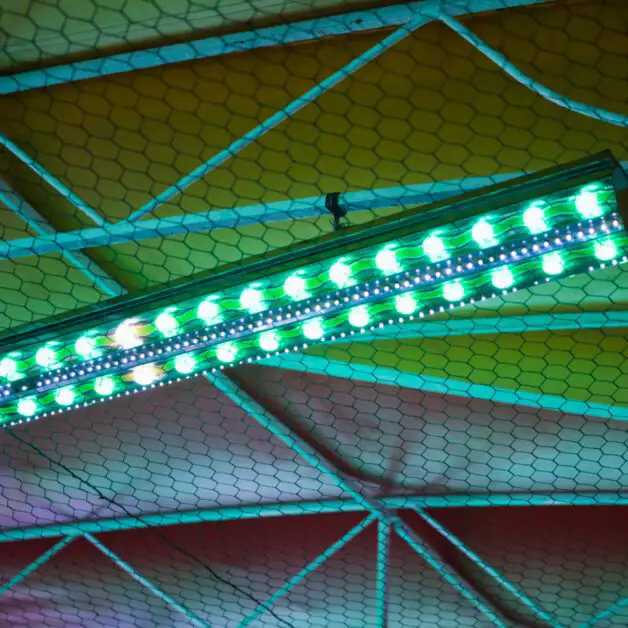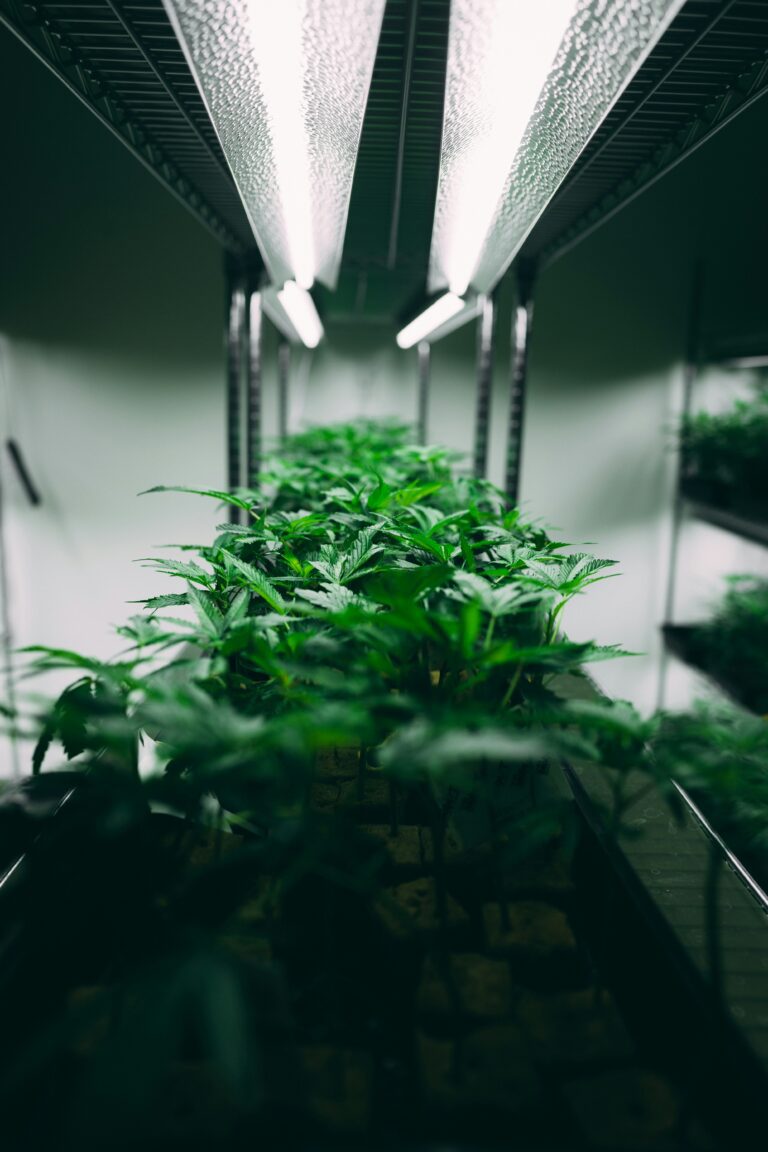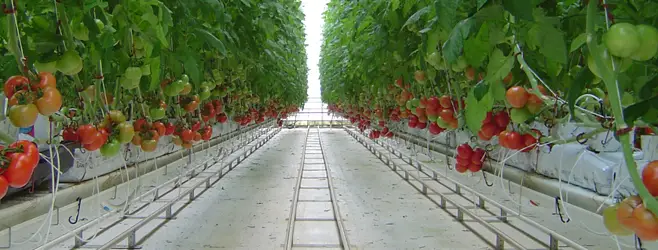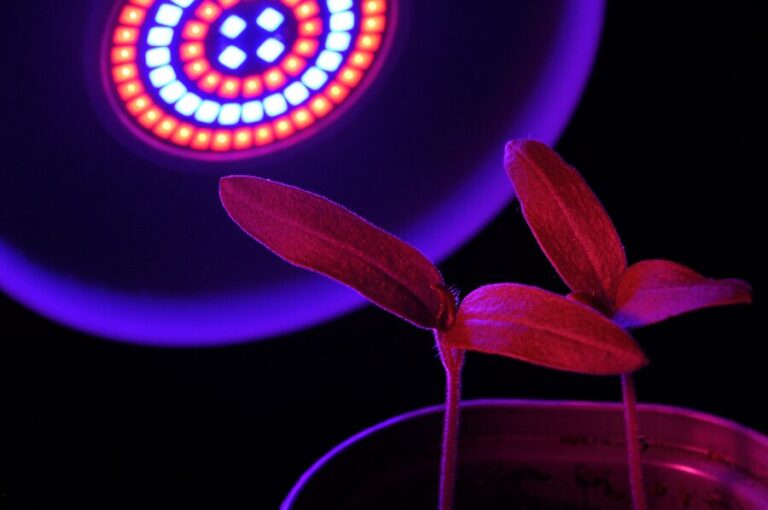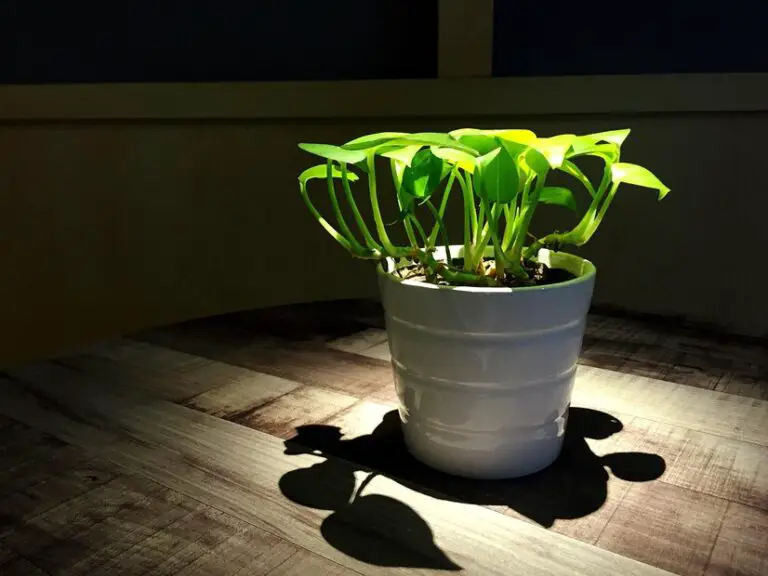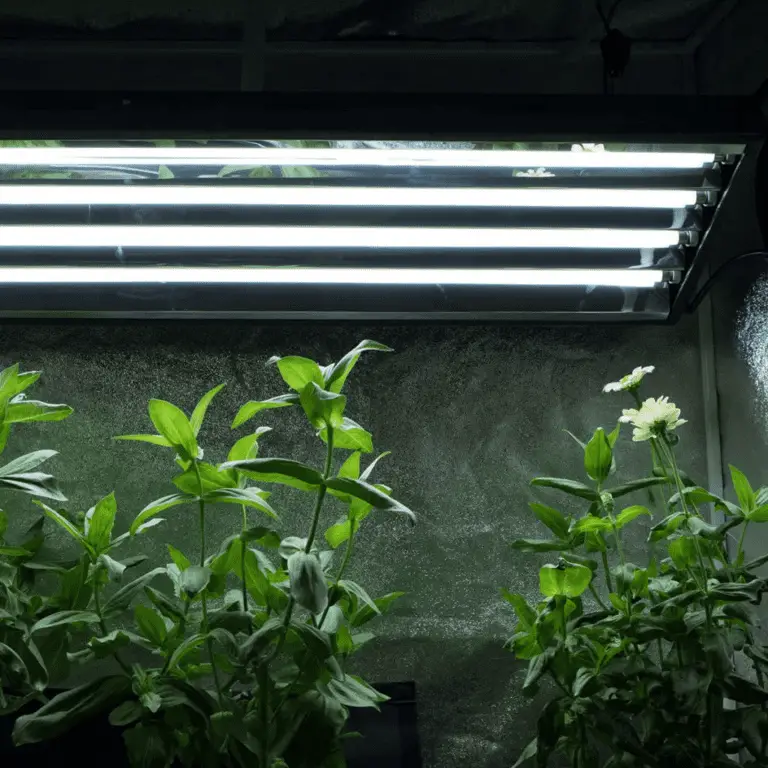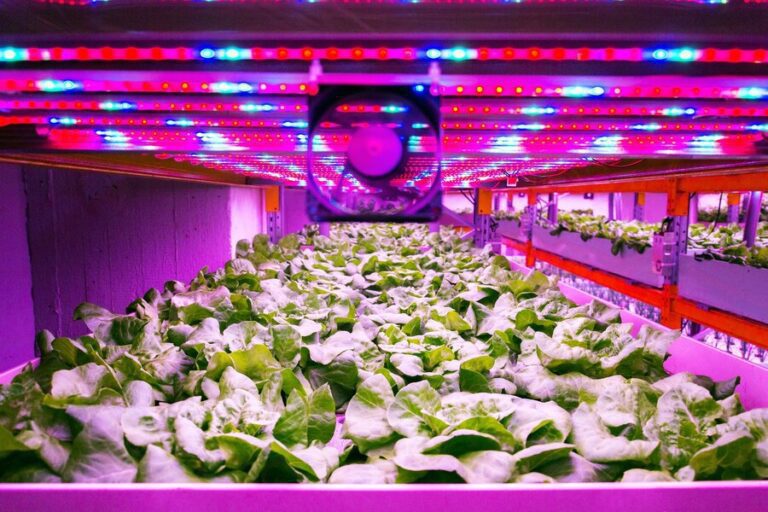Different Types of Grow Light Bulbs: How to Choose the Right Bulb for Your Plants
Table of Contents
Types of Grow Light Bulbs for Indoor Gardening
As an indoor gardener, one of the most important decisions you’ll need to make is choosing the right type of grow light bulbs for your plants. There are several different options available, each with their own advantages and disadvantages. Let’s take a closer look at some of the most common types:
1. LED Grow Light Bulbs: LED (Light Emitting Diode) grow light bulbs have gained popularity among indoor gardeners in recent years. They are energy-efficient, produce little heat, and can be adjusted to emit specific light spectrums that promote plant growth. LED bulbs also have a longer lifespan compared to other types, making them a cost-effective choice in the long run. Additionally, they can be used for various stages of plant growth, from seedlings to flowering plants.
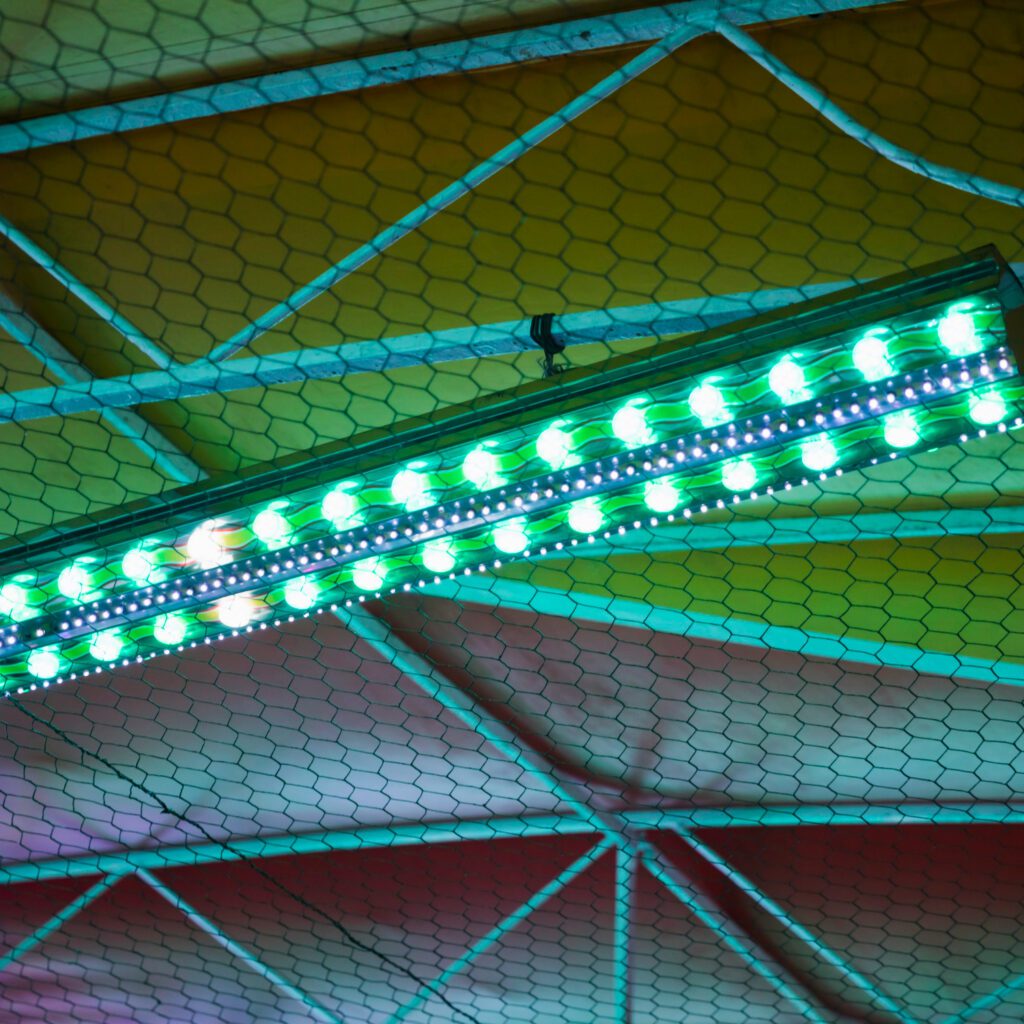
2. Fluorescent Grow Light Bulbs: Fluorescent bulbs, including compact fluorescent lights (CFLs) and high-output fluorescent lights (HOFLs), have long been a popular choice for indoor gardening. They are affordable, readily available, and provide a good spectrum of light for plant growth. However, they are not as energy-efficient as LED bulbs and may require frequent replacement.
It’s important to consider factors such as the specific needs of your plants, your budget, and the available space when choosing the right type of grow light bulbs for your indoor garden. By understanding the advantages and disadvantages of each type, you can make an informed decision that will optimize the growth and health of your plants.
Factors to Consider When Choosing Grow Light Bulbs for Your Plants
Factors to Consider When Choosing Grow Light Bulbs for Your Plants
When it comes to choosing grow light bulbs for your plants, there are several important factors to consider to ensure optimal growth and productivity. First and foremost, you need to evaluate the light spectrum provided by the bulbs. Different plants have varying light requirements at different stages of growth, so it is crucial to select a bulb that offers the appropriate spectrum for the specific needs of your plants.
Another factor to consider is the wattage of the grow light bulb. The wattage will determine the intensity of the light emitted, which directly affects the growth and development of your plants. It is essential to match the wattage to the size of your indoor garden and the light requirements of your plants. Using a wattage that is too high can lead to light burn and excess heat, while a wattage that is too low may not provide enough light for optimal growth.
In addition to spectrum and wattage, it is also important to consider the lifespan of the grow light bulbs. LED bulbs, for example, are known for their longevity and energy efficiency, making them a popular choice among indoor gardeners. On the other hand, fluorescent bulbs are known for their affordability but have a shorter lifespan compared to LEDs. Assessing the lifespan of the bulbs will help you make a more cost-effective and sustainable choice for your indoor garden.

Overall, choosing the right grow light bulbs for your plants requires careful consideration of factors such as spectrum, wattage, and lifespan. By understanding the specific light requirements of your plants and evaluating these factors, you can create an optimal lighting environment for healthy and thriving indoor plants.
Understanding the Different Light Spectrums of Grow Light Bulbs
When it comes to indoor gardening, understanding the different light spectrums of grow light bulbs is essential for promoting healthy plant growth. Grow light bulbs emit light in different wavelengths, and each wavelength corresponds to a specific color spectrum. Plants require different types of light throughout their growth stages, and by using the right light spectrum, you can optimize their development.
| Light Spectrum | Wavelength Range | Dominant Colors | Function in Plant Growth |
|---|---|---|---|
| Ultraviolet (UV) | 100-400 nm | N/A (Invisible) | Stimulates production of secondary metabolites, can inhibit plant growth |
| Visible Light | 400-700 nm | Violet, Blue, Green, Yellow, Orange, Red | Essential for photosynthesis, different colors affect various growth stages |
| Infrared (IR) | 700-1100 nm | N/A (Invisible) | Enhances photosynthesis, promotes flowering and fruiting, provides heat |
| Blue Light | 400-500 nm | Blue | Stimulates vegetative growth, enhances chlorophyll absorption, regulates photomorphogenesis |
| Red Light | 600-700 nm | Red | Promotes flowering and fruiting, enhances photosynthesis, crucial for overall growth |
| Far-Red Light | 700-800 nm | Far-Red | Influences flowering time, can inhibit germination, regulates photoperiodic responses |
| Full Spectrum | Combines UV, Visible, and IR | Multiple | Mimics natural sunlight, suitable for all growth stages, promotes overall plant health |
One crucial light spectrum to consider is the blue spectrum, which is responsible for promoting vegetative growth in plants. Blue light is essential for stimulating chlorophyll production, which plays a crucial role in photosynthesis. This spectrum encourages the growth of leaves and stems, making it ideal for seedlings, clones, and young plants. By utilizing grow light bulbs that emit a higher intensity of blue light, you can ensure that your plants have the necessary energy to develop strong and healthy vegetative structures.
Benefits of Using LED Grow Light Bulbs for Indoor Gardening
LED grow light bulbs have become increasingly popular among indoor gardeners due to the numerous benefits they offer. One of the key advantages of using LED grow light bulbs is their energy efficiency. Compared to traditional light bulbs, LEDs consume significantly less energy while providing the same, if not better, light output. This energy efficiency not only helps reduce electricity costs but also minimizes the environmental impact of indoor gardening.
Another benefit of LED grow light bulbs is their long lifespan. On average, LED bulbs can last up to 50,000 hours, which is significantly longer than other types of grow light bulbs. This extended lifespan means less frequent replacement and reduced maintenance costs for indoor gardeners. Additionally, LED bulbs do not contain any hazardous substances like mercury, making them environmentally friendly and safe for use in indoor gardening.
LED grow light bulbs also produce less heat compared to other types of bulbs. This is particularly important in indoor gardening, as excessive heat can harm plants and disrupt their growth. The cooler operating temperatures of LED bulbs allow gardeners to position them closer to the plants without risking any damage. Additionally, the reduced heat output helps maintain optimal temperature levels in the growing environment, creating a more favorable and controlled atmosphere for plants to thrive.
In the next section, we will delve deeper into the advantages and disadvantages of using fluorescent grow light bulbs, another popular choice among indoor gardeners. Understanding the characteristics of different types of grow light bulbs will help you make informed decisions when selecting the most suitable option for your plants’ specific needs.
Advantages and Disadvantages of Using Fluorescent Grow Light Bulbs
Fluorescent grow light bulbs are a popular choice among indoor gardeners for several reasons. One of their main advantages is their energy efficiency. Fluorescent bulbs consume significantly less energy compared to traditional incandescent bulbs, making them a cost-effective option for long-term use. Additionally, fluorescent bulbs emit very little heat, reducing the risk of overheating and potential damage to plants.
Furthermore, fluorescent grow light bulbs produce a wide spectrum of light that is suitable for most stages of plant growth. This means that they can be used throughout the entire life cycle of a plant, from seed germination to flowering and fruiting. The balanced light spectrum promotes healthy growth, ensuring that plants receive the necessary amount of light for photosynthesis.
However, there are a few disadvantages to consider when using fluorescent grow light bulbs. One drawback is that they have a shorter lifespan compared to other types of grow lights, such as LED bulbs. Typically, fluorescent bulbs will need to be replaced every 6-8 months to maintain optimal light output. This can be an inconvenience and an additional cost for gardeners.
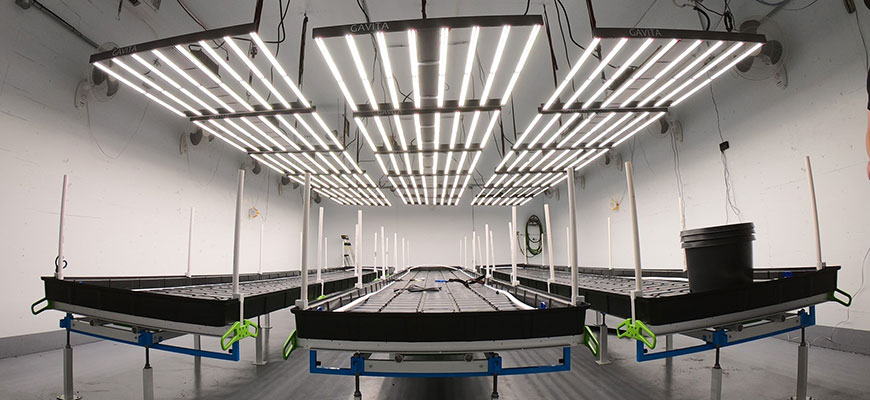
Additionally, fluorescent bulbs may not provide the same intensity of light as other types of grow lights. This means that they may not be suitable for plants that require high light intensity, such as certain types of fruiting plants or plants with dense foliage. In these cases, alternative lighting options may be more suitable to ensure proper growth and development.
In conclusion, fluorescent grow light bulbs offer energy efficiency and a balanced light spectrum, making them a popular choice for indoor gardening. However, the shorter lifespan and lower light intensity may be considerations for certain plant species. It is important for gardeners to assess their specific plant needs and lighting requirements before deciding on the appropriate grow light bulbs for their indoor garden.
The Role of Incandescent Grow Light Bulbs in Indoor Plant Growth
Incandescent grow light bulbs have long been a popular choice among indoor gardeners due to their affordability and widespread availability. These bulbs are known for their warm yellowish light, similar to traditional household incandescent bulbs. However, when it comes to providing the necessary light for indoor plant growth, incandescent bulbs may not be the ideal option.
One of the main drawbacks of incandescent bulbs for indoor gardening is their high heat output. These bulbs emit a significant amount of heat, which can be detrimental to plants if they are placed too close. The excessive heat can cause damage to the foliage and even result in the plants wilting or burning. Additionally, incandescent bulbs have a relatively low lumen output compared to other types of grow lights. This means that they may not provide sufficient light intensity for optimal photosynthesis, leading to stunted growth and poor overall plant health.
While incandescent grow light bulbs may not be the most efficient choice for indoor plant growth, they can still have a role in certain situations. Some gardeners use them as supplementary lighting or for specific plants that do not require intense light. Additionally, incandescent bulbs can be utilized during the flowering stage of plant growth since they emit light in the red spectrum, which promotes blooming. However, it is important to consider the heat output and light intensity requirements of your specific plant species before incorporating incandescent bulbs into your indoor garden setup.
Choosing the Right Wattage for Your Grow Light Bulbs
Choosing the right wattage for your grow light bulbs is a crucial step in ensuring the proper growth and development of your indoor plants. The wattage of a grow light bulb directly affects the amount of light energy delivered to your plants, which in turn affects their photosynthesis and overall health.
To determine the appropriate wattage for your grow light bulbs, it is essential to consider the specific needs of your plants. Different plants have varying light requirements, and factors such as the stage of growth, type of plant, and available space should be taken into account.
For example, seedlings and young plants usually require less intense light compared to mature plants. In such cases, lower wattage bulbs, typically ranging from 20 to 40 watts, can provide adequate light without overwhelming the plants. On the other hand, flowering and fruiting plants generally require higher light intensity for better yields, so higher wattage bulbs, such as 100 to 1000 watts, may be suitable.
It is important to strike a balance between providing sufficient light and preventing light burn or damage to your plants. Using a wattage that corresponds to your plants’ needs will ensure optimal growth and help you avoid issues such as stunted growth, yellowing leaves, or decreased yield.
In addition to considering the wattage, it is also essential to assess the coverage area of your grow light bulbs. Different wattages have different coverage areas, and understanding this relationship will help you determine the number of bulbs needed to adequately illuminate your plants.
Keep in mind that wattage alone should not be the sole factor in deciding which bulbs to choose. It is important to consider other factors, such as the light spectrum, color temperature, and overall quality of the bulbs, for a comprehensive approach to indoor gardening. By selecting the right wattage based on your plants’ specific requirements, you can create an optimal lighting environment that promotes healthy and vigorous growth.
How to Determine the Light Intensity Required for Your Plants
Determining the right light intensity for your plants is crucial for successful indoor gardening. Light intensity refers to the amount of light that reaches your plants, and it affects their growth and overall health. But how do you determine the light intensity required for your specific plants?
First, consider the light requirements of the plant species you are growing. Different plants have different light needs, and some may thrive in lower light conditions while others require high-intensity light. Research the specific light requirements of your plants and note whether they prefer low, medium, or high light levels. This information can usually be found on plant labels or in gardening guides.
Next, you need to assess the light conditions in your indoor gardening space. Measure the intensity of light using a light meter or lux meter. These devices provide accurate readings that can help you determine if the current light levels in your space match your plants’ requirements. If the light intensity falls below what your plants need, you may need to consider supplementing with artificial grow lights. Alternatively, if the light intensity is too high, you may need to adjust the distance between your plants and the light source to avoid damaging your plants.
Remember, determining the light intensity required for your plants is essential for their growth and overall success in indoor gardening. By understanding your plants’ light requirements and assessing the light conditions in your space, you can provide the ideal environment for their growth and achieve optimal results.
Factors to Consider When Selecting the Color Temperature of Grow Light Bulbs
When it comes to selecting the color temperature of grow light bulbs for your indoor garden, there are a few factors to consider. Color temperature refers to the color appearance of light and is measured in Kelvin (K). It plays a crucial role in plant growth and development as it affects the way plants perceive light and carry out photosynthesis.
The first factor to consider is the growth stage of your plants. Different color temperatures are suitable for different growth stages. For instance, seedlings and young plants thrive under cooler color temperatures around 5000K to 6500K, which simulate the bright natural light of spring. On the other hand, flowering and fruiting plants benefit from warmer color temperatures around 2700K to 3000K, replicating the warm hues of a summer sunset. Understanding the specific needs of your plants at each growth stage will help you choose the right color temperature to promote healthy growth and maximize yield.
Another factor to consider is the type of plants you are growing. Different plants have different light requirements and preferences. For example, leafy greens like lettuce and spinach generally do well under cooler color temperatures, while flowering plants such as roses and orchids respond better to warmer color temperatures. Research the light preferences of the specific plants you are growing to ensure you provide them with the ideal color temperature for optimal growth and productivity.
The Importance of CRI (Color Rendering Index) in Grow Light Bulbs
The Color Rendering Index (CRI) is a crucial factor to consider when choosing grow light bulbs for your indoor garden. CRI measures the ability of a light source to accurately render colors in comparison to natural sunlight. Since plants rely on specific light wavelengths for efficient photosynthesis, it is essential to select grow light bulbs with a high CRI.
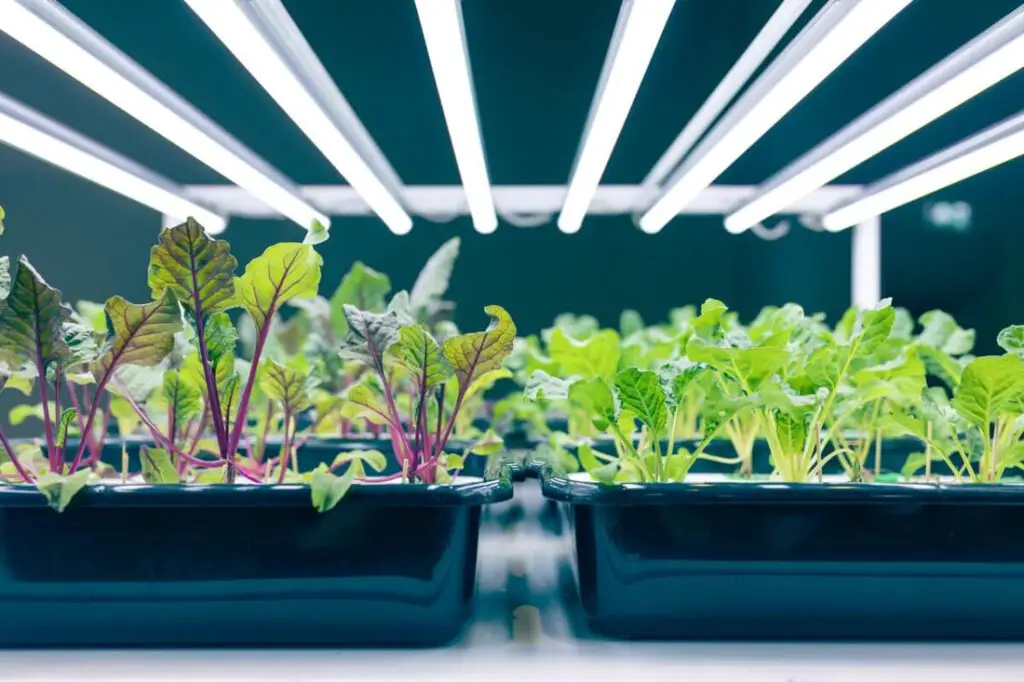
A higher CRI value indicates that the light source will provide a more accurate representation of colors in your indoor garden. This is particularly important if you are growing flowering plants or fruits, as it allows you to observe the true colors of the blooms or produce. Additionally, a higher CRI can enhance the visual appeal of your plants, making them look more vibrant and healthier.
To ensure optimal plant growth and development, it is recommended to choose grow light bulbs with a CRI value of 80 or above. These bulbs will provide a more balanced spectrum of light, closely resembling natural sunlight. By selecting grow light bulbs with a high CRI, you can create an ideal environment for your plants to thrive indoors.
Understanding PAR (Photosynthetically Active Radiation) in Grow Light Bulbs
Photosynthetically Active Radiation (PAR) is a term used to describe the type of light that plants require for photosynthesis. It refers to the wavelengths of light that are within the range of 400 to 700 nanometers. These wavelengths are crucial for the process of photosynthesis, as they are absorbed by the chlorophyll in plants, enabling them to convert carbon dioxide and water into glucose and oxygen.
When selecting grow light bulbs for your indoor garden, understanding the concept of PAR is essential. The intensity and quality of PAR emitted by the grow light bulbs directly impact the growth and development of your plants. It is important to choose bulbs that provide a high level of PAR to ensure optimal photosynthesis and overall plant health.
Different types of grow light bulbs have varying levels of PAR. LED grow light bulbs are known for their efficiency in producing a high amount of PAR while consuming less energy. This makes them a popular choice among indoor gardening enthusiasts. On the other hand, fluorescent grow light bulbs also emit a considerable amount of PAR, but they tend to be less efficient and have a shorter lifespan compared to LEDs.
By considering the PAR output of grow light bulbs, you can provide your plants with the ideal light spectrum they need for healthy growth. It is recommended to measure the PAR levels at different distances from the light source and adjust accordingly to ensure that your plants receive adequate light for their specific requirements. To take your indoor gardening to the next level, understanding and harnessing the power of PAR is crucial for successful plant growth and development.
How to Calculate the Required Number of Grow Light Bulbs for Your Indoor Garden
Calculating the required number of grow light bulbs for your indoor garden is essential to ensure optimal plant growth and overall success. Factors such as the size of your garden, the light intensity required by your plants, and the wattage of the bulbs all play a role in determining the number of bulbs needed.
Firstly, consider the size of your indoor garden. Different plants have varying light requirements, and the size of your garden will determine the coverage area needed. To calculate the number of grow light bulbs required, measure the length and width of your garden and multiply these measurements to determine the total square footage. For example, if your garden is 4 feet wide and 6 feet long, the total square footage would be 24 square feet.
The second factor to consider is the light intensity required by your plants. Some plants, like leafy greens, require lower light levels, while others, such as fruiting plants, need higher light intensity. Consult plant-specific recommendations or use a light meter to determine the appropriate light intensity for your plants. Once you have this value in terms of foot-candles or lux, you can then refer to the specifications of the grow light bulbs to determine the coverage area provided by each bulb.
Lastly, consider the wattage of the grow light bulbs. The wattage indicates the power consumption and the intensity of the light emitted by the bulb. Different bulbs have different wattages, and the number of bulbs needed will depend on the desired light intensity. Divide the recommended light intensity value by the light intensity provided by one bulb to determine the number of bulbs required.
By calculating the required number of grow light bulbs based on the size of your garden, the light intensity requirements, and the wattage of the bulbs, you can ensure that your plants receive the optimal amount of light for healthy and vigorous growth.
Tips for Proper Placement and Positioning of Grow Light Bulbs in Your Indoor Garden
Proper placement and positioning of grow light bulbs is crucial to ensure optimal growth and development of your indoor plants. Here are a few key tips to consider when setting up your grow light system:
1. Distance from plants: It is essential to determine the ideal distance between your grow light bulbs and the plants. This distance varies depending on the type of bulb and the specific needs of your plants. As a general guideline, LED grow light bulbs should be positioned 12-24 inches above the plant canopy, while fluorescent bulbs may require a distance of 6-12 inches.
2. Coverage area: Consider the size of your indoor garden and the light requirements of your plants when determining the number and arrangement of grow light bulbs. Ensure that your bulbs provide sufficient coverage to reach all parts of the plant canopy. For larger gardens, it may be necessary to use multiple bulbs or larger fixtures to evenly distribute light.
Remember that different plants have varying light requirements, with some needing more direct light and others preferring diffused or indirect light. Understanding the specific needs of your plants will help you determine the best placement and positioning of your grow light bulbs, ensuring healthy growth and abundant yields.
Keep in mind that the duration and timing of light exposure are also important factors to consider. Most plants require a certain number of hours of light each day, along with a period of darkness for proper rest. It is recommended to use timers to automate the lighting schedule, providing your plants with consistent and appropriate light cycles.
By carefully following these tips, you can create an optimal environment for your indoor plants, allowing them to thrive and flourish under your grow light system. Remember to regularly monitor your plants for signs of light stress or deficiency, and adjust the placement and positioning of your grow light bulbs accordingly.
What is the recommended distance between grow light bulbs and plants in an indoor garden?
The recommended distance between grow light bulbs and plants depends on the type of bulbs used. As a general rule, LED grow light bulbs should be placed 12 to 24 inches away from the plants, while fluorescent bulbs should be positioned 6 to 12 inches away. Incandescent bulbs require a larger distance, typically 24 to 36 inches.
Can I use different types of grow light bulbs together in my indoor garden?
Yes, you can use different types of grow light bulbs together in your indoor garden. This allows you to provide a broader spectrum of light, which can be beneficial for plant growth. However, it is important to consider the specific light requirements of your plants and ensure that the bulbs are positioned at the appropriate distances.
How long should I leave the grow light bulbs on each day?
The duration of light exposure depends on the specific needs of your plants. As a general guideline, most plants require 12 to 16 hours of light per day. However, it is essential to research the light requirements of each plant species to ensure they receive the appropriate amount of light for healthy growth.
Do grow light bulbs emit heat?
Yes, grow light bulbs do emit heat, especially incandescent and fluorescent bulbs. LED grow light bulbs produce less heat compared to traditional bulbs. It is important to consider the heat output of the bulbs when determining the distance and placement in your indoor garden to prevent heat stress on the plants.
Can I use grow light bulbs for all stages of plant growth?
Yes, grow light bulbs can be used for all stages of plant growth, including germination, vegetative growth, and flowering. However, different light spectrums may be more beneficial at different stages. Some LED grow light bulbs have adjustable spectrums, allowing you to customize the light for specific growth phases.
Can positioning of grow light bulbs affect plant growth?
Yes, the positioning of grow light bulbs can significantly impact plant growth. Placing the bulbs too far or too close to the plants can result in issues such as stretching or burning of leaves. It is crucial to follow the recommended positioning guidelines for each type of grow light bulb to ensure optimal growth and prevent damage.
Can I use regular household light bulbs for indoor gardening?
Regular household light bulbs are not recommended for indoor gardening as they do not emit the necessary light spectrum for plant growth. Grow light bulbs are specially designed to provide the specific wavelengths of light that plants require. It is best to use bulbs specifically labeled for growing plants indoors.
Should I rotate the position of grow light bulbs to ensure even growth?
It can be beneficial to rotate the position of grow light bulbs in your indoor garden to promote even growth. By periodically moving the bulbs or adjusting their angles, you can prevent plants from leaning or stretching towards the light source and encourage balanced growth.
Can I use a timer with grow light bulbs?
Yes, using a timer with grow light bulbs is highly recommended. Timers allow you to automate the lighting schedule for your indoor garden, ensuring that plants receive consistent and appropriate light exposure. This is especially useful if you are unable to manually turn the lights on and off at specific times each day.
Can I use reflectors with grow light bulbs to maximize light distribution?
Yes, using reflectors with grow light bulbs can help maximize light distribution in your indoor garden. Reflectors bounce light back towards the plants, reducing light loss and increasing overall efficiency. Make sure to position the reflectors correctly to direct the light where it is needed most.

Pallavi Gupta is a burgeoning writer at SouthElMonteHydroponics, blending her passion for data analysis with a keen interest in biotechnology. Currently pursuing a Bachelor’s in Biotechnology at Amity University, Pallavi delves into the intricacies of life sciences while gaining hands-on experience in the exciting world of data analysis. Her unique background provides a fresh perspective on hydroponic farming, as she explores the intersection of biotechnology and sustainable agriculture. Through her writing, Pallavi aims to bridge the gap between data-driven insights and innovative farming practices, inspiring others to harness technology for a greener future.

